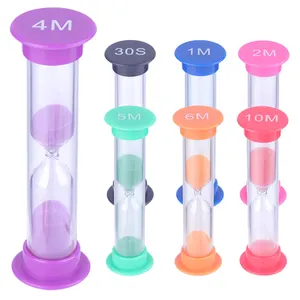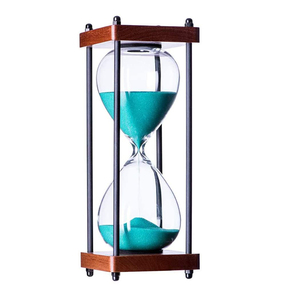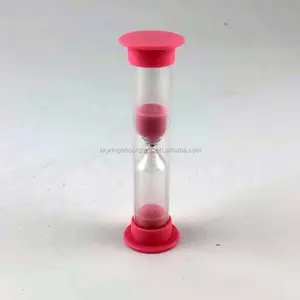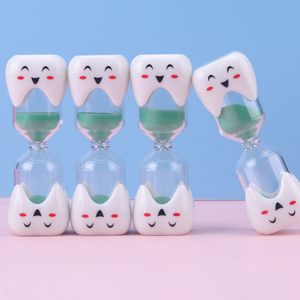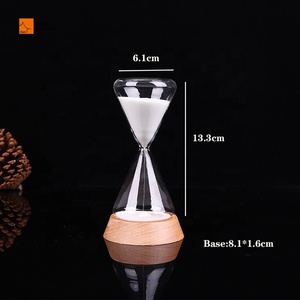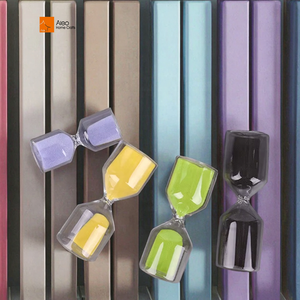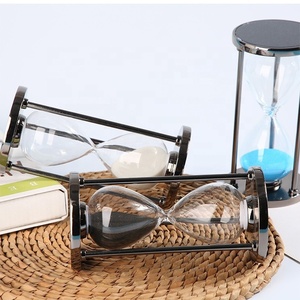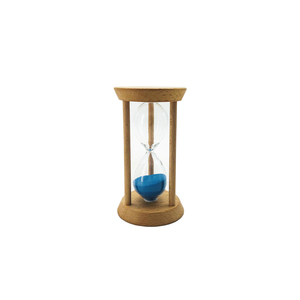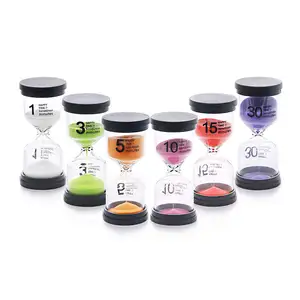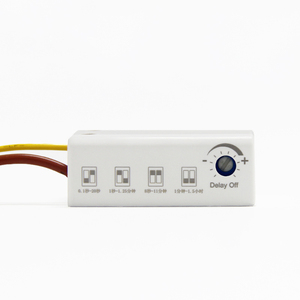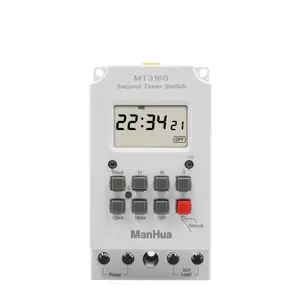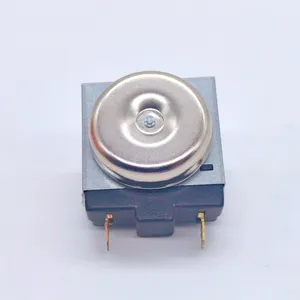30 Second Timer Download






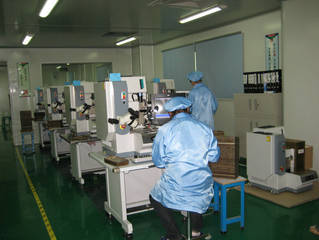






 1/15
1/15







 1/30
1/30





 1/26
1/26






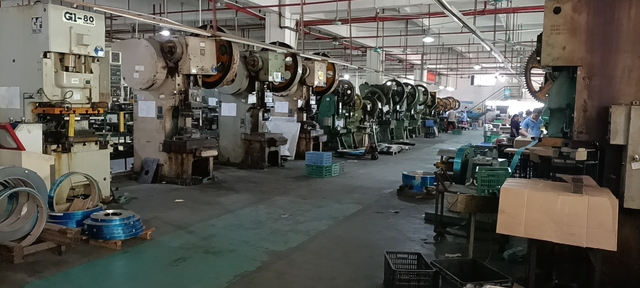








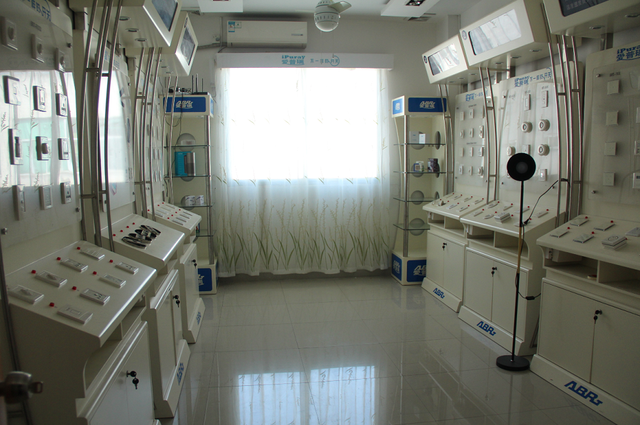










 1/22
1/22
















 1/24
1/24





 1/2
1/2





 1/19
1/19







About 30 second timer download
Where to Find 30 Second Timer Suppliers?
China serves as a central hub for the production of compact timing devices, with key manufacturing clusters in Guangdong and Zhejiang provinces. These regions host specialized factories integrating plastic molding, digital electronics assembly, and sand timer fabrication under one supply chain. Shenzhen and Hangzhou-based suppliers dominate output for digital and hybrid timers, leveraging proximity to component suppliers for LCD displays, microcontrollers, and battery modules. This localized sourcing reduces lead times by up to 25% compared to offshore alternatives.
Suppliers in these industrial zones operate scalable production lines capable of fulfilling both high-volume orders and customized configurations. Many facilities support dual-track manufacturing—simultaneously producing analog hourglasses and programmable digital timers—allowing buyers access to diversified product portfolios from single-source vendors. Typical monthly outputs range from 50,000 to 200,000 units depending on complexity, with common materials including ABS plastic, borosilicate glass, and acrylic. Advanced processing techniques such as laser engraving, injection molding, and waterproof sealing are standard across mid-tier and premium suppliers.
How to Choose 30 Second Timer Suppliers?
Procurement decisions should be guided by verifiable operational metrics and technical capabilities:
Production and Customization Capacity
Prioritize suppliers offering customization options for color, material, size, logo, packaging, and graphic design. Verified multispecialty manufacturers demonstrate higher flexibility in fulfilling OEM/ODM requests. Confirm whether the factory supports low-volume sampling (as low as 1–10 pieces) before scaling to bulk orders.
Quality and Delivery Performance
Evaluate performance indicators including on-time delivery rate (target ≥94%), reorder rate (indicative of customer satisfaction), and response time (ideally ≤3 hours). Suppliers with online revenue exceeding US $40,000 signal consistent transaction volume and market demand absorption capacity.
- On-time delivery rates above 98% correlate with robust internal logistics and inventory management
- Response times under 2 hours indicate dedicated sales or customer service teams
- Reorder rates above 50% reflect strong product quality and post-sale reliability
Minimum Order Quantity and Pricing Structure
MOQs vary significantly—from 100 to 5,000 pieces—impacting procurement strategy. Lower-priced items often require higher volumes (e.g., $0.20/unit at 1,000+ MOQ), while advanced digital models may command prices up to $4.00/unit at 100-piece minimums. Assess cost-per-unit against required functionality: basic sand timers are suitable for promotional use, whereas programmable LCD models serve professional or educational applications.
What Are the Best 30 Second Timer Suppliers?
| Company Name | Main Products | On-Time Delivery | Reorder Rate | Response Time | Online Revenue | MOQ Range | Price Range (USD) | Customization |
|---|---|---|---|---|---|---|---|---|
| Boluo Shiwan Skyringe Craft Factory | Hourglasses | 87% | 16% | ≤9h | US $10,000+ | 100–1,000 pcs | $0.20–1.60 | Limited |
| Shenzhen Go Hand International Trade Co., Ltd. | Digital Timers, Kitchen Timers, Desk Clocks | 100% | 16% | ≤2h | US $20,000+ | 100–5,000 pcs | $1.15–4.00 | Yes |
| Hangzhou Yizhi Sports Goods Co., Ltd. | Digital & LED Timers | 94% | <15% | ≤3h | US $40,000+ | 1–100 pcs | $2.70–290.00 | Yes |
| Shenzhen Aleo Home Crafts Co., Ltd. | Sand Timers, Decorative Timers | 100% | 57% | ≤2h | US $360,000+ | 20–1,000 pcs | $1.06–7.80 | Yes |
| Quanzhou Conris Electronic Technology Co., Ltd. | Wooden & Metal Sand Timers | 98% | <15% | ≤3h | US $50,000+ | 2–1,000 pcs | $2.80–9.80 | Limited |
Performance Analysis
Shenzhen Aleo Home Crafts stands out with a 100% on-time delivery rate and the highest reorder rate (57%), indicating superior customer retention likely driven by reliable fulfillment and product consistency. Despite moderate pricing, its ability to accommodate lower MOQs (from 20 pieces) enhances accessibility for small businesses. Hangzhou Yizhi offers broad customization and caters to niche electronic timer markets, though its low reorder rate suggests potential gaps in after-sales service or scalability. Boluo Shiwan provides entry-level pricing but lags in delivery performance (87%) and responsiveness (≤9h), posing risks for time-sensitive procurements. Shenzhen Go Hand and Quanzhou Conris exhibit balanced capabilities, with fast response times and solid delivery records, making them viable for mid-volume digital and decorative timer orders.
FAQs
How to verify 30 second timer supplier reliability?
Cross-check on-time delivery rates, response times, and reorder metrics provided in supplier profiles. Request evidence of quality control processes, particularly for electronic components like battery life and display accuracy. Analyze transaction history and prioritize suppliers with documented export experience to your target market.
What is the typical lead time for 30 second timer orders?
Standard production lead times range from 15 to 25 days after order confirmation. Sample delivery typically takes 7–14 days. Complex customizations involving unique molds or embedded programming may extend timelines to 35 days.
Can suppliers provide free samples?
Most suppliers offer paid samples, with costs recoverable upon placing a full order. Free samples are rare unless part of a promotional campaign or for high-potential buyers. Expect sample fees between $10 and $50 depending on product type.
Do manufacturers support private labeling and packaging?
Yes, many suppliers—including Shenzhen Aleo and Hangzhou Yizhi—offer full branding services for logos, color schemes, and retail-ready packaging. Minimum thresholds typically start at 500–1,000 units, though some accept lower volumes for an additional fee.
What are common materials used in 30 second timers?
Analog models commonly use borosilicate glass, ABS plastic, or wooden frames with metal trims. Digital variants incorporate LCD panels, silicone buttons, and plastic housings. High-end versions feature waterproof seals and shock-resistant casings for industrial or outdoor use.


